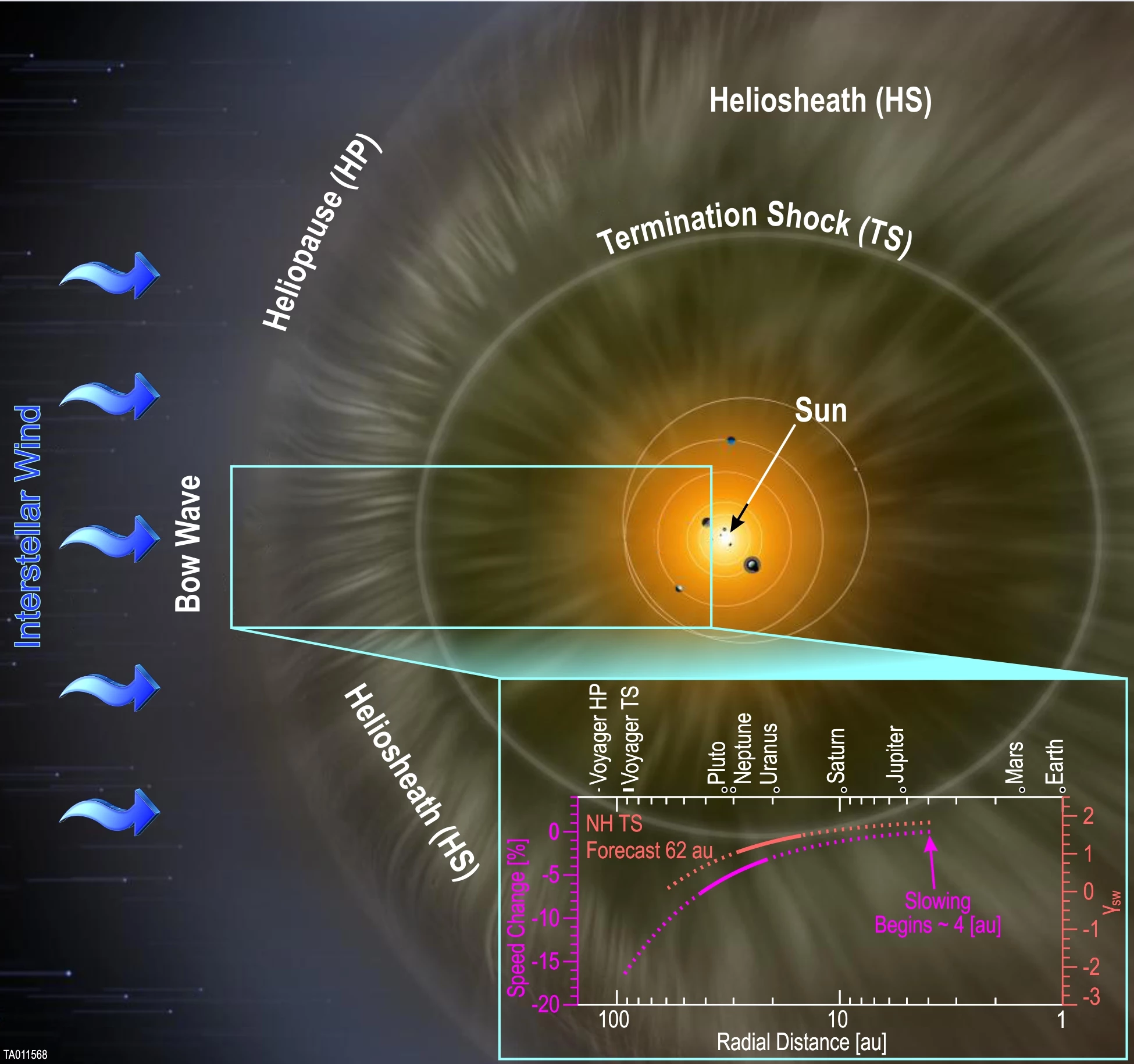An instrument aboard NASA's New Horizons is sending back data that could help scientists predict when the unmanned deep-space probe will reach interstellar space. Using the Solar Wind Around Pluto (SWAP) instrument aboard the spacecraft, a team of researchers led by Southwest Research Institute are learning more about how the solar winds change in the outer regions of the solar system.
Though the solar system may look like a big ball of nuclear fire at the center surrounded by a scattering of tiny, solid objects sitting in a lot of very hard vacuum, all that nothingness is permeated by the solar winds – an unceasing flow of ionized particles from the Sun that forms an uneven bubble around our family of planets called the heliosphere.
The outer limit of the heliosphere is where it encounters materials from interstellar space. This is the point where the solar wind slow down to subsonic speeds due to interacting and then is stopped altogether by the interstellar medium. These two points are called, respectively, the termination shock and the heliopause.

To measure the interaction between the solar and the interstellar, New Horizons is equipped with the SWAP instrument. Though Pioneer 10 and 11, and Voyager 1 and 2 have all been out this far, none were carrying such a sophisticated device that can make detailed, daily measurements of the solar wind, and especially “interstellar pickup ions.” These are stray neutral atoms wandering in from cosmic space, which are then ionized by sunlight. According to Southwest Research Institute, SWAP can measure low fluxes of interstellar pickup ions with unprecedented time resolution and extensive spatial coverage.
Currently about 46 astronomical units (AU) (4.3 billion mi, 6.8 billion km) from the Sun, New Horizons is at a distance where scientists expect the solar wind to start to noticeably slow down and heat up as it encounters and interacts with interstellar material. According to the Southwest Research Institute team, SWAP has confirmed that this is actually happening.
For the purposes of the study, the researchers looked at solar wind speed measurements from a distance of 21 to 42 AU using SWAP and compared them to measurements from NASA's Advanced Composition Explorer (ACE) and Solar TErrestrial RElations Observatory (STEREO) spacecraft at one AU (93 million mi, 149 million km).

What they found was that at 21 AU, SWAP detected a slowing of the solar wind and by the time it reached 42 AU, New Horizons saw the winds drop by up to seven percent slower than those registered at 1 AU.
This not only gave new insights into the far regions of the solar system but may also help to estimate when New Horizons will reach interstellar space by using the changes in solar wind temperature and density to estimate where the solar wind slows to below Mach one (741 mph, 1,193 km/h) – ie. the termination shock.
The reason why the SWAP data is needed is that this point varies with the level of solar activity. Since the Sun is at a very low level of activity at the moment, the termination shock is closer to the Sun, so New Horizons is currently closer to it. However, the spacecraft isn't scheduled to reach that point until the middle of the next decade, so the termination shock may move farther out if the Sun goes into an active period – perhaps as much as far as 94 AU (8.7 billion mi, 14 billion km).
"Previously, only the Pioneer 10 and 11 and Voyager 1 and 2 missions have explored the outer solar system and outer heliosphere, but now New Horizons is doing that with more modern scientific instruments," says Heather Elliott, Deputy Principal Investigator of the SWAP instrument. "Our Sun’s influence on the space environment extends well beyond the outer planets, and SWAP is showing us new aspects of how that environment changes with distance."
The findings were published in The Astrophysical Journal.
Source: Southwest Research Institute





